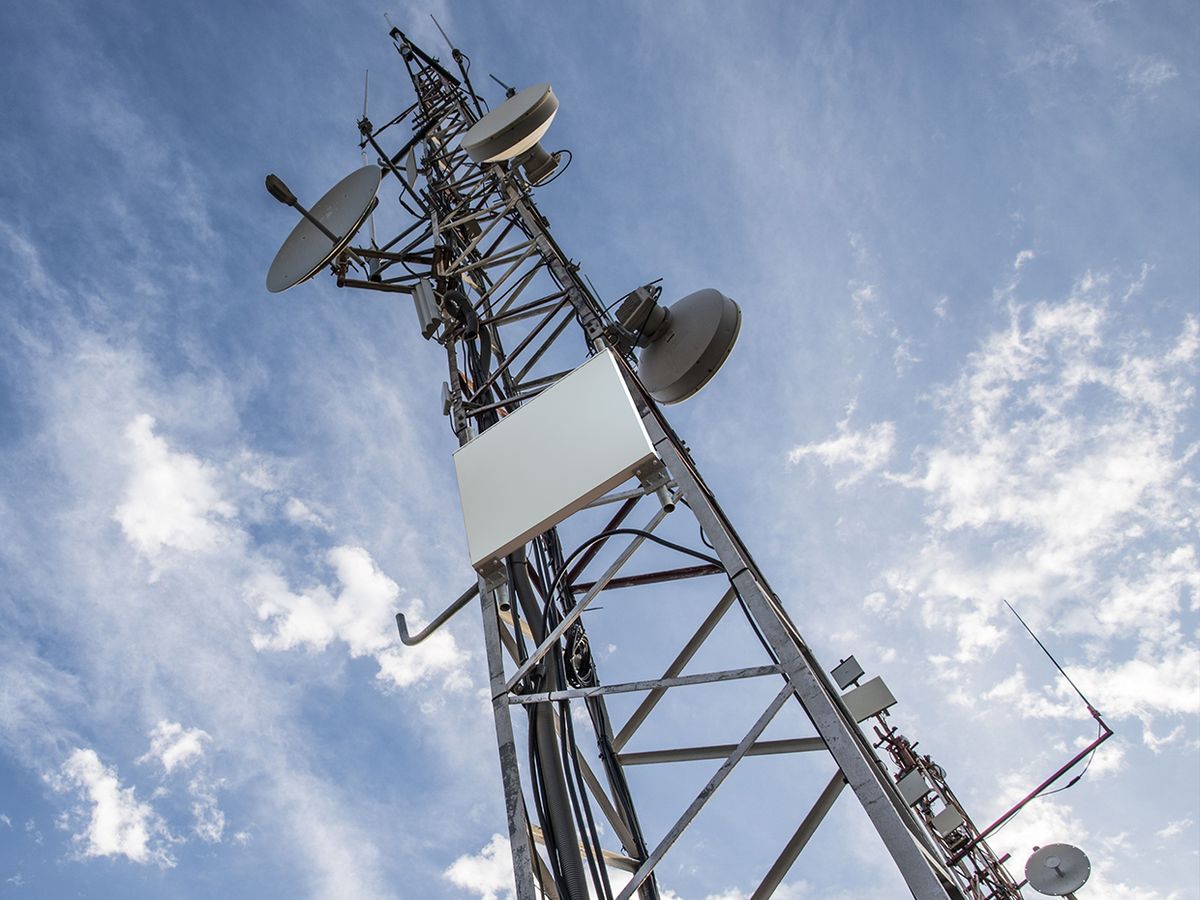Today’s cell towers serve as beacons of mobile service, screaming their signal out in all directions for any devices close enough to benefit. This approach has worked fine for the most part, but in a future with more advanced phones packed more tightly together on a 5G network, towers will need to make better use of their allocated radio frequencies.
A new type of cell signaling called holographic beamforming [PDF], developed by a company called Pivotal Commware, could soon replace the old way. A low-cost improvement upon existing phased array beamforming and multiple input, multiple output (MIMO) antennas, holographic beamforming has the potential to target and follow individual or small clusters of devices and provide them with their own high-fidelity beams of radiofrequency (RF) energy.
“It’s basically putting a megaphone in front of your mouth,” explains Brian Deutsch, CEO of Pivotal Commware, “it’s harnessing and focusing the energy in one direction.”
Just as a holographic interference pattern can shape visible light into a hologram, the company’s holographic beamforming ASIC passively breaks down and reshapes the RF signal into the desired shape.
These individual, narrow beams can be rapidly adjusted to provide service to phones and devices as they move, thanks to Pivotal Commware’s software-defined antenna, which can redirect individual signals within 100 nanoseconds.
Deutsch describes the value of holographic beamforming (HBF) in terms of being in a small room during a crowded party. The volume in the room goes up as people try to talk to each other and raise their voices to cut through the noise. But give everyone a narrow beam, something along the lines of a PVC pipe, to speak and listen through, and everyone would be able to hear each other just fine.
“Not only would you increase fidelity for each conversation, but the overall noise lowers,” says Deustch. “In this case, it’s a two-for-one.”
Recently, HBF antennas were successfuly tested on Advanced Wireless Service and Personal Communications Service frequencies through 40 Gigahertz (GHz). This includes the millimeter wave frequencies of 28 GHz and 39 GHz that will be dedicated to 5G service. Pivotal Commware plans to be ready for production and commercial deployment of its antennas and cloud-based management system later this year.

Traditional beamforming and MIMO require expensive hardware for each beam. In a phased array beamforming system, each beam requires its own amplifier as well as a phase shifter to redirect the signal. MIMO systems need an entire radio setup for each beam. For the type of expansive network that will be needed to roll out 5G service, these systems are cost-prohibitive in terms of both hardware and energy usage. For holographic beamforming, none of that is necessary.
“We figured out how to do this with standard off-the-shelf components,” says Deutsch, explaining that they prioritized C-SWaP, a military acronym that stands for Cost, Size, Weight, and Power during their development and tests. On top of that, they added conformality to reflect the flexibility of their antennas, which are designed to be wrapped around street poles and other round objects so they can redirect signals in all directions.
The entire HBF antenna is made up of a patch of printed copper circuitry, a US 10-cent impedance component that they buy off the shelf, and their ASIC.
During testing, the big hurdle was creating good enough beam fidelity that the various RF signals weren’t interfering with each other along the way.
“At first we had very Neanderthal beams,” says Deutsch. Not only were they initially too broad, but they also needed to make the antenna more efficient so that the signals weren’t losing too much energy during transmission.
Because holographic beamforming promises individualized signaling, fidelity is very important. A limitation of existing beamforming techniques is the interference that occurs at the borders and intersections of various beams. The traditional answer is to focus the beams where service is needed and put the border regions over areas where no one happens to be standing.
“As the honeycomb gets tighter, you have more borders to worry about,” says Deutsch. To solve that problem, he hopes to develop a self-optimizing network that, through machine learning, can automatically and constantly adjust individual beams among towers through a cloud-based management system to provide service where needed and put the regions of interference where there aren’t any devices at that moment.
As HBF and 5G service roll out, that could mean using machine learning to automatically point beams toward areas of high device congestion, targeting people in a stadium or on their daily commutes, such that the network learns what times of day to expect people to be in which areas, and plan accordingly.
“The evolution is toward machine learning, but wireless carriers go at the speed of wireless carriers,” says Deutsch. “It’s definitely in their future, they know that. How long have they been talking about self-optimizing networks when they didn’t mean it? And now, we have a way to do it.”



